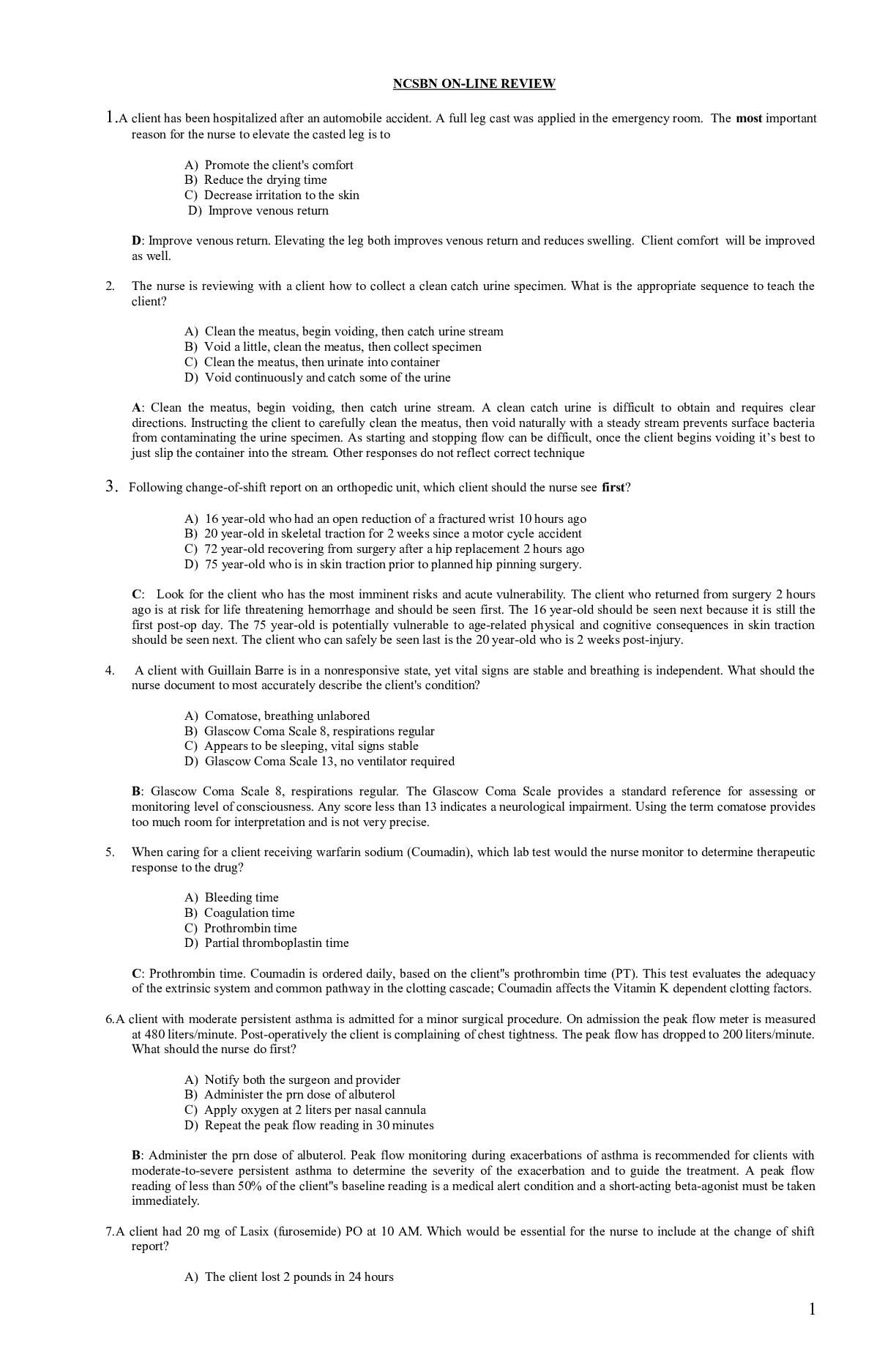NCSBN ON-LINE REVIEW
Course
Project Management
Subject
Chemistry
Category
Questions and Answers
Pages
171
Uploaded By
ATIPROS
Preview 5 out of 171 Pages


Download all 171 pages for $ 17.00
Reviews (0)
$17.00
